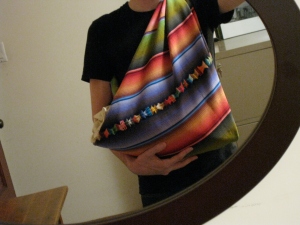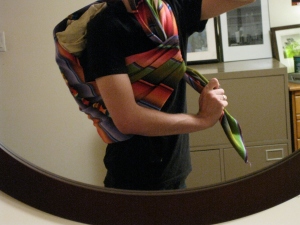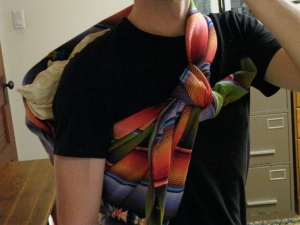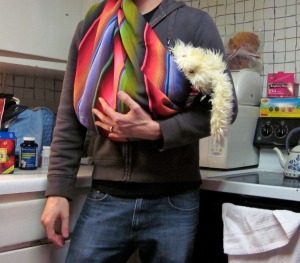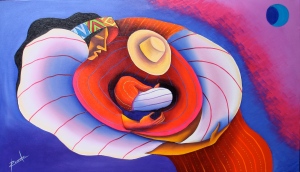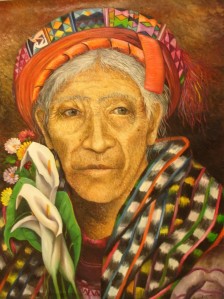WARNING: DO NOT ATTEMPT TO CARY AN INFANT OR CHILD BASED ON THESE DIRECTIONS.
So, this post is for theoretical use only. Please do not try this at home with real children.
I posted earlier on my fascination with woven baby carriers, or cargadores de bebes, used by the modern Maya and wanted to post a step by step post on how to fold the baby carriers.
I am no expert and at this point would NOT carry any child in a baby carrier that I folded. I learned how to fold them in Guatemala, but by no means am an expert.
And That’s A Post specifically states that you should not mistake this post for training on how to fold a cargador de bebé for real use. Please, get trained by an expert if you ever intend to use this method to transport a child. DO NOT jeopardize the safety and well-being of any child by placing them in a baby carrier based on this post. If not used correctly, an infant or young child could potentially fall out or suffocate in a misused carrier.
Now, most woven textiles in Guatemala used for carrying babies are two long textiles woven on a back-strap loom. Both textiles are stitched together along a side to form a large square textile. The textile is opened into a square and then one corner is taken diagonally across the cloth to meet is opposite corner–forming a large triangle.
The baby is placed in the center of the triangle with its head facing out on the hypotenuse. The two ends to each side of the baby are then pulled to meet over the baby. They are tied in a square knot.
Right over left and left over right.
The knot is then pulled tight.
Now, the right angle part of the triangle, is pulled up and folded over the baby’s feet. This secures the baby in the blanket.
Lift the sling up supporting the baby with one arm. Slide your left arm through the sling. This will enable your right arm to be free for other tasks while you are carrying the baby. Place the knot over your right shoulder. This is for carrying the baby in front. This is particularly useful for breast feeding or holding the baby while sitting down.
If you would like to carry the baby on your back, de la espalda, then grab the knot with one hand and place your other arm under the baby. While rotating the knot forward over your breast, rotate the baby backward over your back.
You may then want to untie your earlier knot and pull the baby tight against your back. Then retie your knot very securely.
Right over left, and left over right. Tighten securely.
And here you have it. My happy, secure baby. Or, well pillow.
WARNING: DO NOT ATTEMPT TO CARY AN INFANT OR CHILD BASED ON THESE DIRECTIONS.








